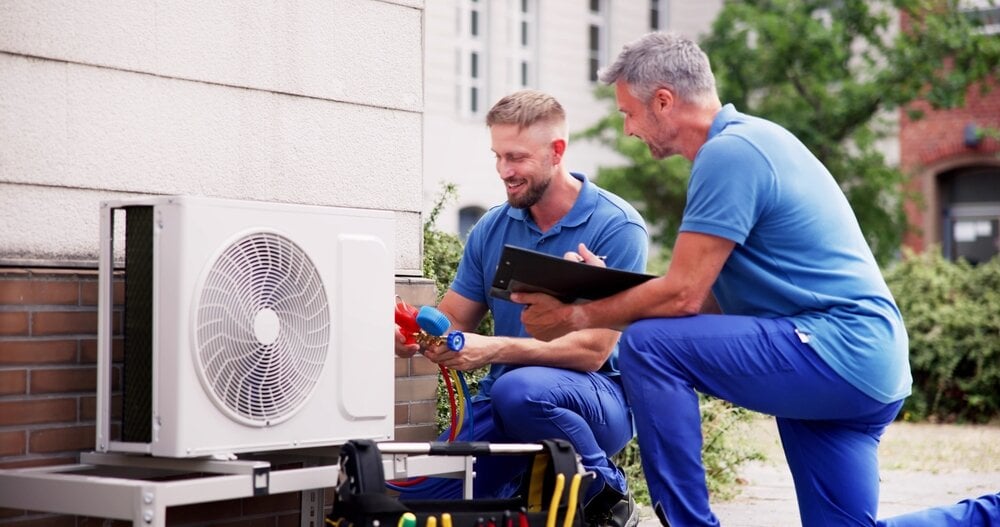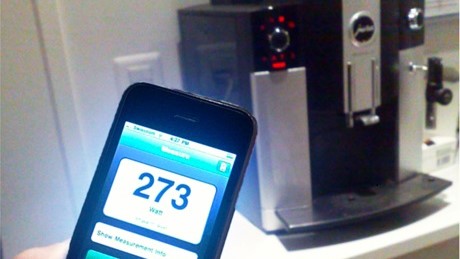Multifamily Minisplit, Is it Right for You?

Author: Tim Moegen
April 11, 2024 - 4 MIN. READ
When it comes to heating and cooling your multifamily property, there are several options, including central air conditioning systems, furnaces, and heat pumps. However, one option that has been gaining popularity in recent years is the minisplit system. This type of system is particularly beneficial in warmer climates and offers a variety of advantages over traditional HVAC systems. Learn about a minisplit system how it works, and its benefits and drawbacks to help you determine if it is right for you.
What is a minisplit system?
A minisplit system is a heating and cooling system that does not require ductwork. Instead, it uses an outdoor compressor unit and one or more indoor units to cool or heat specific areas on your property. Much like a central system, the indoor unit is connected to the outdoor unit which contains the power cable, refrigerant line, suction tubing, and condensate drain.
How does a minisplit system work?
A minisplit system works by pulling in warm air from inside your property and transferring it to the outdoor unit, which then releases the warm air outside. The cool refrigerant in the outdoor unit absorbs the heat from the warm air and is then pumped back to the indoor unit to cool the air inside. In heating mode, the process is reversed, and warm air is pumped inside your property.
Benefits of a minisplit system
There are many benefits of a multifamily minisplit system that property managers should take into consideration when researching HVAC options. These include:
Energy efficiency: Since minisplit systems do not require ductwork, there is no energy loss due to leaks or heat gain/loss, resulting in more energy-efficient operation.
Easy installation: Because there is no ductwork, minisplit systems are relatively easy to install compared to traditional HVAC systems. This makes them ideal for residences that do not have existing ducts. Depending on the number of units, installation can be as quick as four to six hours for the entire system.
Zoning: Minisplits can also be programmed to only cool or heat specific rooms, which can increase comfort levels and further increase energy savings. According to the United States Department of Energy, a minisplit with a zoning system can save property owners as much as 30% on their energy bill.
Quiet operation: Since the compressor unit is located outside, and the indoor units are small and unobtrusive, minisplit systems operate much more quietly than traditional HVAC systems, making them ideal for use in bedrooms or other quiet spaces.
Improved indoor air quality: Multi-stage filtration removes dust, pollen, mold spores, pollutants, and other allergens from the air, resulting in improved indoor air quality and decreasing the risk of illnesses that are transmitted through the air.
Drawbacks of a minisplit system
Upfront cost: Multifamily minisplit systems can be more expensive to install initially than traditional HVAC systems, costing approximately 30% more than central systems. The price can be about twice as much compared to window units of similar capacity. This means installing minisplits can be a costly project if multiple indoor units are required.
Size matters: It is vital to install the correct size unit because oversized or incorrectly installed equipment results in energy waste when you are unable to properly control the temperature or humidity.
Location: While a minisplit system works well in traditional settings, minisplits do not work well in rooms that have low ceilings or an unusually shaped room layout.
Aesthetics: The indoor units of a minisplit system are visible and bulky and may not fit well with certain interior design styles because they do not blend in with all décors. While they are becoming more common and people may be used to the look, manufacturers know form as well as function matters to consumers. Some are working on alternatives to make them more attractive.
Limited heating capacity: Minisplit systems may not be suitable for very cold climates since they have limited heating capacity. This is also why they may not be the best choice for larger spaces.
Maintenance: Like any other heating and cooling system, minisplit systems require regular maintenance to ensure optimal performance. This can be an added expense. Additionally, the individual indoor units must be removed from the wall when repairs are necessary.
Weather-dependent performance: The performance of minisplit systems can be affected by extreme weather conditions, such as very high or low temperatures or heavy rain, sleet, or snow.
Is a minisplit system right for you?
Whether a minisplit system is right for you depends on your specific needs and circumstances. For properties located in warmer climates and property owners who want to cool specific rooms or zones, a minisplit system could be an excellent choice. Additionally, anyone concerned about energy efficiency and indoor air quality will find a minisplit system a good option to consider.
But for those who live in a cold climate, a minisplit system may not provide sufficient heating capacity. In this case, a traditional HVAC system may be a better option.
How Raiven can help
If you are considering installing a new HVAC system for your property, a minisplit system is a great option to consider. Raiven’s online marketplace offers a wide selection of multifamily supplies from HD Supply, Home Depot, and other industry-leading suppliers around the country, including suppliers of minisplit systems.
And with Raiven, property owners who wish to take advantage of all the benefits of a minisplit system will find that Raiven’s purchasing program saves you money while helping your employees buy smarter and more efficiently. Reach out today to learn more.


